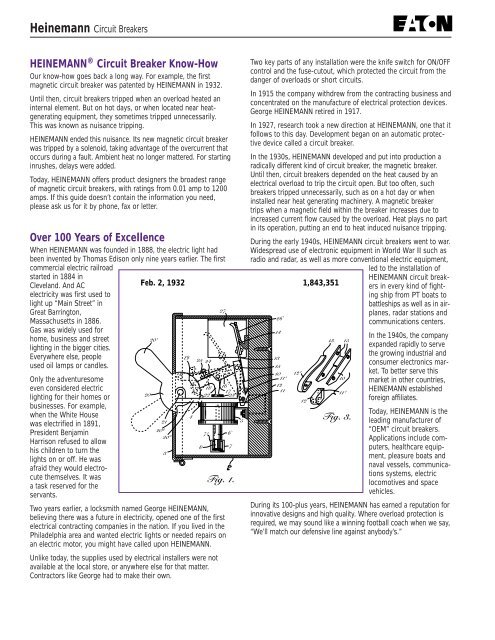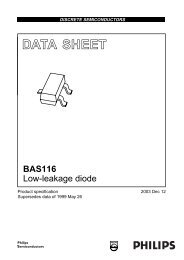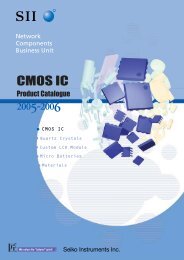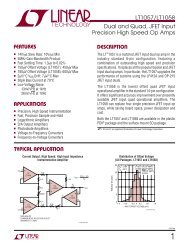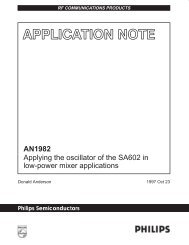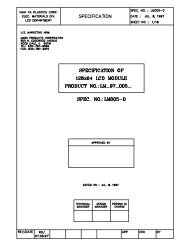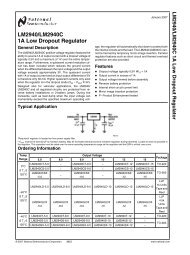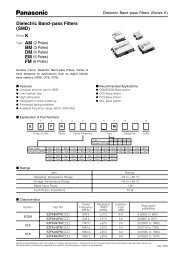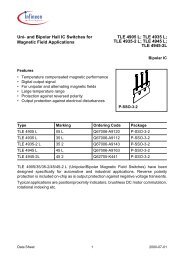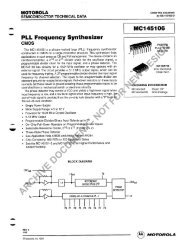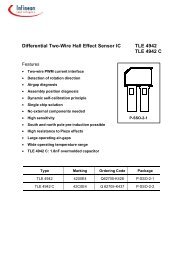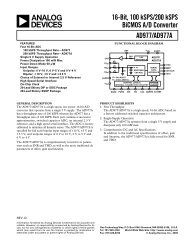The Power of Reliability - Heinemann Electric Canada Ltd.
The Power of Reliability - Heinemann Electric Canada Ltd.
The Power of Reliability - Heinemann Electric Canada Ltd.
You also want an ePaper? Increase the reach of your titles
YUMPU automatically turns print PDFs into web optimized ePapers that Google loves.
<strong>Heinemann</strong> Circuit Breakers<br />
HEINEMANN ® Circuit Breaker Know-How<br />
Our know-how goes back a long way. For example, the first<br />
magnetic circuit breaker was patented by HEINEMANN in 1932.<br />
Until then, circuit breakers tripped when an overload heated an<br />
internal element. But on hot days, or when located near heatgenerating<br />
equipment, they sometimes tripped unnecessarily.<br />
This was known as nuisance tripping.<br />
HEINEMANN ended this nuisance. Its new magnetic circuit breaker<br />
was tripped by a solenoid, taking advantage <strong>of</strong> the overcurrent that<br />
occurs during a fault. Ambient heat no longer mattered. For starting<br />
inrushes, delays were added.<br />
Today, HEINEMANN <strong>of</strong>fers product designers the broadest range<br />
<strong>of</strong> magnetic circuit breakers, with ratings from 0.01 amp to 1200<br />
amps. If this guide doesn’t contain the information you need,<br />
please ask us for it by phone, fax or letter.<br />
Over 100 Years <strong>of</strong> Excellence<br />
When HEINEMANN was founded in 1888, the electric light had<br />
been invented by Thomas Edison only nine years earlier. <strong>The</strong> first<br />
commercial electric railroad<br />
started in 1884 in<br />
Cleveland. And AC<br />
electricity was first used to<br />
light up “Main Street” in<br />
Great Barrington,<br />
Massachusetts in 1886.<br />
Gas was widely used for<br />
home, business and street<br />
lighting in the bigger cities.<br />
Everywhere else, people<br />
used oil lamps or candles.<br />
Only the adventuresome<br />
even considered electric<br />
lighting for their homes or<br />
businesses. For example,<br />
when the White House<br />
was electrified in 1891,<br />
President Benjamin<br />
Harrison refused to allow<br />
his children to turn the<br />
lights on or <strong>of</strong>f. He was<br />
afraid they would electrocute<br />
themselves. It was<br />
a task reserved for the<br />
servants.<br />
Two years earlier, a locksmith named George HEINEMANN,<br />
believing there was a future in electricity, opened one <strong>of</strong> the first<br />
electrical contracting companies in the nation. If you lived in the<br />
Philadelphia area and wanted electric lights or needed repairs on<br />
an electric motor, you might have called upon HEINEMANN.<br />
Unlike today, the supplies used by electrical installers were not<br />
available at the local store, or anywhere else for that matter.<br />
Contractors like George had to make their own.<br />
Feb. 2, 1932 1,843,351<br />
Two key parts <strong>of</strong> any installation were the knife switch for ON/OFF<br />
control and the fuse-cutout, which protected the circuit from the<br />
danger <strong>of</strong> overloads or short circuits.<br />
In 1915 the company withdrew from the contracting business and<br />
concentrated on the manufacture <strong>of</strong> electrical protection devices.<br />
George HEINEMANN retired in 1917.<br />
In 1927, research took a new direction at HEINEMANN, one that it<br />
follows to this day. Development began on an automatic protective<br />
device called a circuit breaker.<br />
In the 1930s, HEINEMANN developed and put into production a<br />
radically different kind <strong>of</strong> circuit breaker, the magnetic breaker.<br />
Until then, circuit breakers depended on the heat caused by an<br />
electrical overload to trip the circuit open. But too <strong>of</strong>ten, such<br />
breakers tripped unnecessarily, such as on a hot day or when<br />
installed near heat generating machinery. A magnetic breaker<br />
trips when a magnetic field within the breaker increases due to<br />
increased current flow caused by the overload. Heat plays no part<br />
in its operation, putting an end to heat induced nuisance tripping.<br />
During the early 1940s, HEINEMANN circuit breakers went to war.<br />
Widespread use <strong>of</strong> electronic equipment in World War II such as<br />
radio and radar, as well as more conventional electric equipment,<br />
led to the installation <strong>of</strong><br />
HEINEMANN circuit breakers<br />
in every kind <strong>of</strong> fighting<br />
ship from PT boats to<br />
battleships as well as in airplanes,<br />
radar stations and<br />
communications centers.<br />
In the 1940s, the company<br />
expanded rapidly to serve<br />
the growing industrial and<br />
consumer electronics market.<br />
To better serve this<br />
market in other countries,<br />
HEINEMANN established<br />
foreign affiliates.<br />
Today, HEINEMANN is the<br />
leading manufacturer <strong>of</strong><br />
“OEM” circuit breakers.<br />
Applications include computers,<br />
healthcare equipment,<br />
pleasure boats and<br />
naval vessels, communications<br />
systems, electric<br />
locomotives and space<br />
vehicles.<br />
During its 100-plus years, HEINEMANN has earned a reputation for<br />
innovative designs and high quality. Where overload protection is<br />
required, we may sound like a winning football coach when we say,<br />
“We’ll match our defensive line against anybody’s.”


